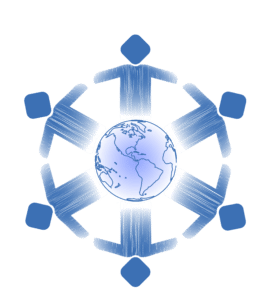Addiction is recognized as a chronic relapse condition characterized by compulsive drug seeking, continued use despite harmful consequences, and long-lasting changes in the brain (National Institute on Drug Abuse, 2020). It is categorized as a complex brain disorder and a mental illness. Addiction is the most severe form of a full spectrum of substance use disorders and is a medical illness caused by repeated misuse of a substance or substances.
At the crux, a public health approach is intrinsic to facilitating the successful prevention and treatment of substance use disorders. Such an approach emphasizes the need for addicted persons to access treatment, limit their harmful drug use, reduce drug use-related risks such as sepsis and overdose and stay alive for longer. It also stresses the importance of prevention to effectively reduce the number of people entering the substance abuse disorder spectrum. The Substance Abuse and Mental Health Services Administration (SAMHSA) noted that prevention and harm reduction can be achieved through public awareness and education.
This can be done by educating teachers, parents, and youth on the science and health consequences of substance use and mental health. It is also essential to use the appropriate media based on target audiences so that the message reaches the intended groups, as well as educates persons on how to host informative conversations on substance use. Group-based learning is proven to be an effective method to motivate students, encourage active learning, and develop key critical-thinking, communication, and decision-making skills; hence, community- and school-based education programs, along with public awareness campaigns, can be successfully implemented.

Workforce development can facilitate primary prevention. The Prevention Technology Transfer Center (PTTC) Network highlights that federally-funded programs can be utilized for technical assistance and resources. The National Association of State Alcohol and Drug Abuse Directors cites communities of practice can work to promote the prevention of substance use disorders. Communities of practice can strengthen public health as members learn, share expertise, and work together on solving common problems (NASADAD, 2022). They provide a collaborative framework for public health professionals to work together to identify best practices and hold each other up to certain standards and are being implemented in many public health areas as a model for how public health partners work together. The CDC (2021) encourages the development of communities of practice, saying that “involvement in a community of practice may not only help set public health priorities but also assist in strengthening and shaping the future of public health.”
The World Health Organization (WHO, 2022) iterates the need to support international training on substance use screening and intervention for all health professionals, regardless of specialty. Additionally, it is essential to train all physicians and healthcare teams in integrating primary care and behavioral health (identifying and treating behavioral health concerns in primary care and vice-versa). There should be attention placed on the entire spectrum of substance use disorders, with the establishment of risk levels; no/low risk indicates the requirement for education and positive reinforcement; moderate risk calls for brief intervention using motivational interviewing, possible follow-up, and harm reduction; while severe risk/addiction requires referral to specialist treatment or outpatient treatment.
Treatment sits in its own spotlight as it paves the way for recovery. The American Board of Addiction Medicine promotes the need for specialist workforce development (addiction medicine certification, fellowships) and coordination between primary and specialty care. The Board also pinpoints the importance of training in evidence-based standards in specialty treatment. The Hazelden Betty Ford Foundation (2021) made the point that the “rehab” industry, to much dismay, still uses inconsistent standards that vary widely across states and countries and often employ approaches that are not evidence-based and do not make use of evidence-based practices like Medication-Assisted Treatment (MAT). This is often because of stigma, outdated models, and unfounded belief that “MAT replaces one drug for another.”

The chronic nature of addiction means that relapsing to drug use is more than possible, it is likely. Treatment of substance use disorders calls for continuous, whole-person care as people in recovery need culturally- and linguistically competent services (Peer Recovery Specialist Certification), housing, employment, and access to medical care. The deeply embedded behaviors need to be changed, which means that reversion to drug use indicates that treatment needs to be reinstated or adjusted, or that alternate treatment is needed (Bradbury, SAMHSA 2019). It is of utmost importance to understand that relapse does not mean failure and that no single treatment is right for everyone. Treatment providers must choose an optimal treatment plan in consultation with the individual patient and should consider the patient’s unique history and circumstances.
The Addiction Training for Health Professionals (ATHP) program recognizes the importance of promoting research, education, and collaboration in the field of mental health, particularly in dealing with addiction and substance abuse. The program endorses the teamwork of experts and organizations in the fields of mental health and addiction to launch research, projects, and educational material with the aim of highlighting these critical issues. ATHP seeks to break the barriers and stigma associated with addiction, mental health, and substance abuse, especially through education, and seeks to contribute to and develop resources for Addiction Medicine education and training.
References
Allison Bradbury, SAMHSA. (2019, January 14). Recovery and Recovery Support | SAMHSA – Substance Abuse and Mental Health Services Administration. Samhsa.gov. https://www.samhsa.gov/find-help/recovery
American Board of Addiction Medicine. (2021). Addiction Medicine Certification. Www.abam.net. https://www.abam.net/addiction-medicine-certification
Centers for Disease Control and Prevention. (2021, December 2). Communities of Practice (CoPs). Www.cdc.gov. https://www.cdc.gov/publichealthgateway/phcommunities/communities-of-practice-cops.html
Hazelden Betty Ford Foundation. (2021). Reforming the Addiction Treatment Industry. Www.hazeldenbettyford.org. https://www.hazeldenbettyford.org/recovery-advocacy/reforming-addiction-treatment-industry
Lipari, R. N., & Park-Lee, E. (2019). Key Substance Use and Mental Health Indicators in the United States: Results from the 2018 National Survey on Drug Use and Health. U.S. Department of Health and Human Services.
National Association of State Alcohol and Drug Abuse Directors. (2022). National Prevention Network |. Nasadad.org. https://nasadad.org/npn-4/
National Institute on Drug Abuse. (2020, July). Drug Misuse and Addiction. National Institute on Drug Abuse. https://nida.nih.gov/publications/drugs-brains-behavior-science-addiction/drug-misuse-addiction
Northeast & Caribbean PTTC. (2021, July 26). A New Call to Action: Enhancing Prevention Ethics to Meet New Challenges | Prevention Technology Transfer Center (PTTC) Network. Www.pttcnetwork.org. https://www.pttcnetwork.org/centers/northeast-caribbean-pttc/product/new-call-action-enhancing-prevention-ethics-meet-new
World Health Organization. (2022). Integrated Health Services. Www.who.int. https://www.who.int/teams/integrated-health-service

Alixandria Ali BSc
Author

